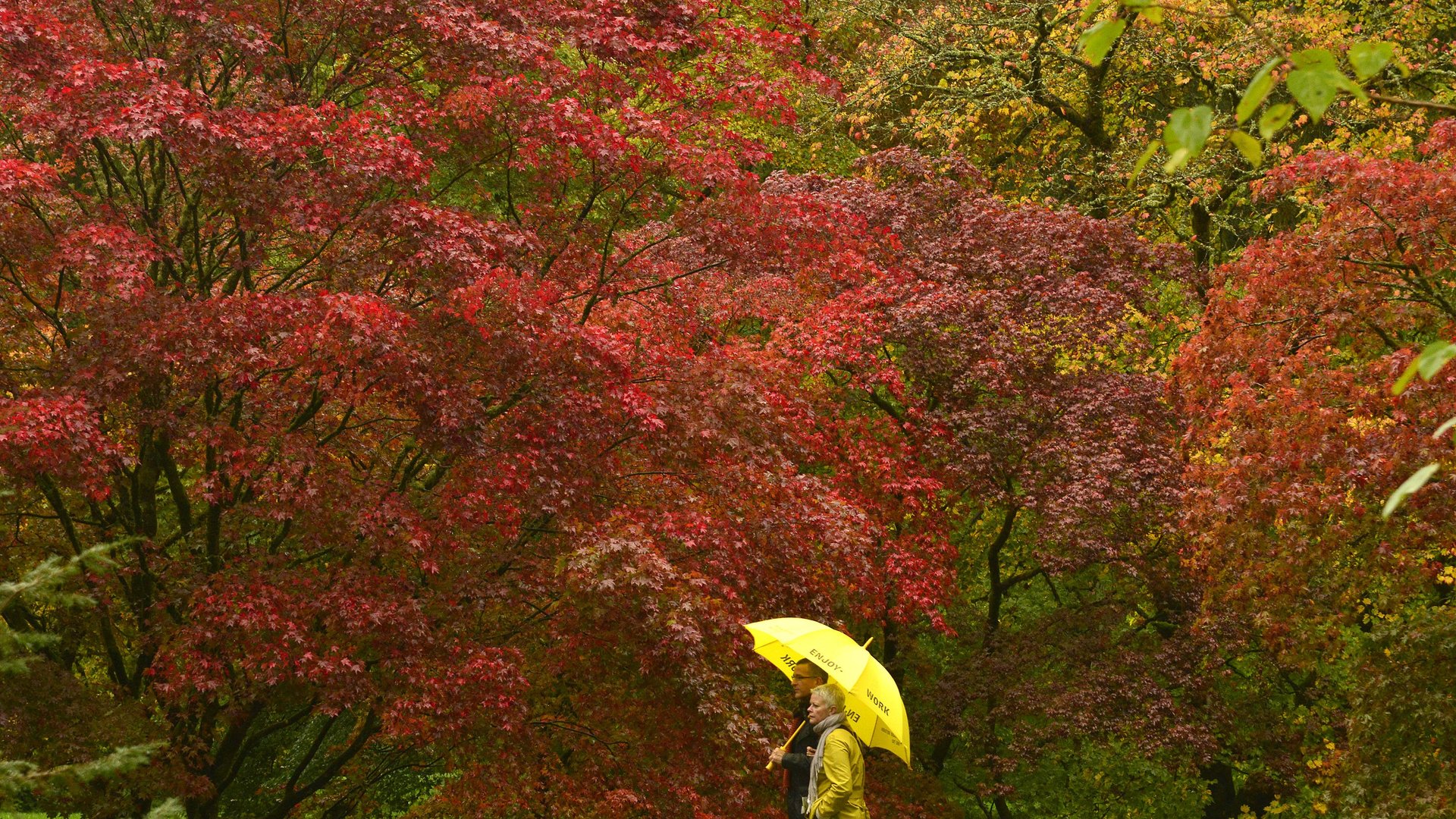The UK is about to have the most vibrant autumn it has seen in eight years
Whether you think autumn officially starts at the beginning or end of September, you only have to look at the trees to see the season is changing. Leaves on deciduous trees always change color from green to vibrant hues of yellow, orange, and red. But some years the colorful show is more spectacular than others. One of the most outstanding recent years in the UK was 2008. And the Forestry Commission is expecting 2016 to be another one of the best.


Whether you think autumn officially starts at the beginning or end of September, you only have to look at the trees to see the season is changing. Leaves on deciduous trees always change color from green to vibrant hues of yellow, orange, and red. But some years the colorful show is more spectacular than others. One of the most outstanding recent years in the UK was 2008. And the Forestry Commission is expecting 2016 to be another one of the best.
So what produces an autumn to remember? Variation from one year to the next in nature can be seen in a number of phenomena, such as the amount and duration of spring blossom, or the quantity of fruit and berries on bushes and trees. Oenophiles (wine lovers) will know that the quality of grapes from which wine is made varies from one year to another. The underlying explanation for all these phenomena is basically the same: the weather.
The distinctive autumnal woodland colors in leaves are formed by the combination of four classes of chemicals: chlorophyll, carotenoids, xanthophylls, and anthocyanins. Chlorophyll, the main chemical involved in photosynthesis, reflects green light, which explains the green color of most deciduous trees in spring and summer.
As the days shorten in temperate latitudes, trees prepare for their winter dormant period by withdrawing nutrients from their leaves. Chlorophyll is rich in nitrogen. While some chlorophyll breaks down throughout the year, the process accelerates during autumn. As less green light is reflected, the colors of other chemicals in the leaves become visible.
Changing pigments
Carotenoids, another chemical involved in photosynthesis, tend to be orange. The yellow xanthophylls are oxygenated carotenoids. The many anthocyanin compounds produce a palette of reds, ranging from the brightest scarlet to maroons and purple. Put these colors together, and you have a vibrant patchwork of color clothing the countryside, urban parks, and gardens.
Data from the Met Office show that Aug. 2016 was warmer (by 0.6 ℃ [1.1 °F]) and sunnier (110%) compared to the long-term average. Combined with a wet spring (rainfall 30% above average in the east and south), this will have led to higher-than-average levels of sugars in plant tissues—and it is these sugars that are the real key to the richness of the autumnal colors. Anthocyanins are large, complex molecules containing a sugar, usually glucose. So more sunshine means more glucose, more anthocyanins, and more vibrant autumnal colors in 2016.
Anthocynanins are produced by some species of tree but not by others, and they are also important in the production of the intense colors of many fruits and berries, including the color of red grapes. In leaves, as the level of chlorophyll decreases, anthocyanins are produced.
It is still not absolutely clear what function is performed by anthocyanins. It costs the plant energy to make them, and only some tree species produce anthocyanins. Around 15% to 30% of tree leaf color is caused by carotenoids and xanthophylls alone. There is some suggestion that anthocyanins are antioxidants and perform a protective role by preventing free radicals (reactive atoms or molecules) from destroying plant tissue and DNA. But this explanation is not universally accepted.
Other explanations are that anthocyanins effectively mask the leaves visually from some predators that can see the green leaves but do not possess the photoreceptors required to detect red leaves or insects that find red less attractive than green.
As the chlorophyll breaks down and leaves naturally turn yellow and orange, so that the carotenoids and xanthophylls are no longer masked by the green, they attract sap-sucking aphids. So some species of tree produce a bright red pigment in the leaves to confuse insects.
How long will it last?
Although the summer weather means we can expect an impressive autumn, there are still some questions. Will 2016 be a long autumnal season, stretching from mid-September into November—or will it be cut short? In 2008, there were a few early frosts. Frost promotes abscission, the process by which the leaf detaches from the twig.
In 2008, leaves fell from the trees over a relatively short period of time. That, of course, brings with it the joys of kicking through piles of fallen leaves—but an early frost will shorten the duration of the autumnal show, as might the high winds associated with autumnal storms.
In the absence of early frosts and storms, however, we can look forward to a magnificent display. But for how many more years will this continue? Climate change has seen the onset date of leaf color change being pushed back. That narrows the window during which the colors can be seen and enjoyed. If we are lucky this year, we will see a peak of color in mid to late October with leaves still on the trees in November—but watch the weather forecast for the latest.
This post originally appeared at The Conversation. Follow @ConversationUS on Twitter.